Lambda Chat
I spent more than a day with Lambda Chat, and it’s like stepping into a sci-fi novel where the AI actually respects your privacy. The interface is crisp, almost minimalist, with a chat window that feels inviting rather than overwhelming. I fired up a conversation with Llama 4 Scout 17B, tossing in a mix of text questions and an image of a kitten to see how it handles multimodal inputs. The response was quick, describing the kitten’s fluffy fur and wide eyes with uncanny detail. It’s the kind of thing that makes you pause and think, “Wow, this AI gets it.”
The privacy angle is what hooked me. Lambda Chat doesn’t snoop on your data or use it to train models, which is a refreshing change from platforms like ChatGPT, where data usage can feel like a black box. The free tier let me play around with basic chats, but I hit the quota fast, which was a bit of a buzzkill. Upgrading to Lambda Chat Pro seems to unlock the good stuff, like advanced models and image processing, though I didn’t dive into the paid plan for this quick test. Compared to Claude, which I’ve also tried, Lambda Chat feels snappier for image tasks but less polished for casual chit-chat.
One feature I loved was the 10M token context window on Llama 4 Scout. I threw a massive codebase at it, and it didn’t flinch, offering insights that saved me hours of manual review. But the login wall for premium models was a drag, I just wanted to test Llama 4 Maverick without signing up. Some X users have griped about the same thing, and I get their frustration. Another surprise was the plaintext file handling for long text inputs, it’s brilliant for developers but tripped me up when I just wanted to paste a paragraph.
Lambda Chat’s competitors, like Grok or Gemini, have their strengths, but Lambda’s open-source ethos and privacy focus set it apart. It’s not without quirks, the occasional lag and sparse onboarding could turn off newbies. If you’re curious, give it a spin on the free tier. Developers and privacy buffs will find it a gem, just don’t expect hand-holding. Start small, experiment with text and images, and you might find yourself hooked.
Video Overview ▶️
What are the key features? ⭐
- Privacy Protection: Encrypts conversations and doesn’t use data konuşmak için eğitim.
- Multimodal Support: Processes text and images with models like Llama 4 Maverick.
- Large Context Window: Llama 4 Scout offers a 10M token window for long inputs.
- Open-Source Models: Uses transparent models like Qwen 2.5 Coder for flexibility.
- Inference API Integration: Allows programmatic access for custom applications.
Who is it for? 🤔
Examples of what you can use it for 💭
- Developer: Uses Llama 4 Scout to analyze large codebases for debugging.
- Researcher: Summarizes lengthy academic papers with Qwen 2.5 Coder.
- Content Creator: Generates image descriptions for blog posts using Llama 4 Maverick.
- Student: Queries complex datasets for study projects via the Inference API.
- Privacy Advocate: Engages in secure chats without data training concerns.
Pros & Cons ⚖️
- Large 10M token context window.
- Open-source model transparency.
- API for custom integrations.
- Occasional latency during peak times.
- Plaintext file handling may confuse.
FAQs 💬
Related tools ↙️
-
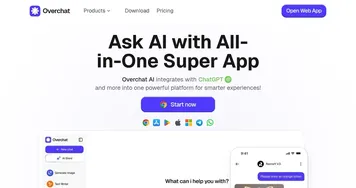 Overchat
Unifies top AI models for seamless writing, coding, and image generation
Overchat
Unifies top AI models for seamless writing, coding, and image generation
-
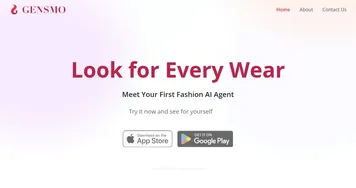 Gensmo
An AI-powered fashion assistant that helps you quickly pick outfits
Gensmo
An AI-powered fashion assistant that helps you quickly pick outfits
-
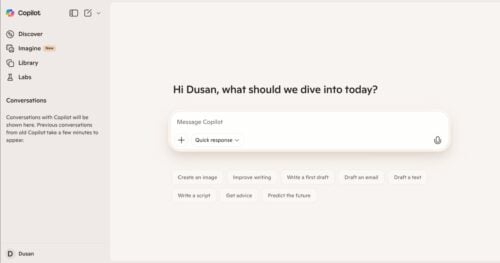 Microsoft Copilot
Boosts productivity with AI-driven answers, writing, and image creation
Microsoft Copilot
Boosts productivity with AI-driven answers, writing, and image creation
-
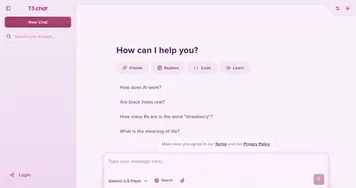 T3 Chat
Access top AI models for fast, versatile chat and task assistance
T3 Chat
Access top AI models for fast, versatile chat and task assistance
-
 FinChat.io
ChatGPT for investors, providing verified data on public companies
FinChat.io
ChatGPT for investors, providing verified data on public companies
-
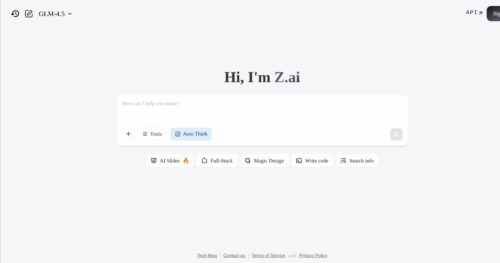 Z.ai
Generates presentations, writing, and code via AI chat
Z.ai
Generates presentations, writing, and code via AI chat

